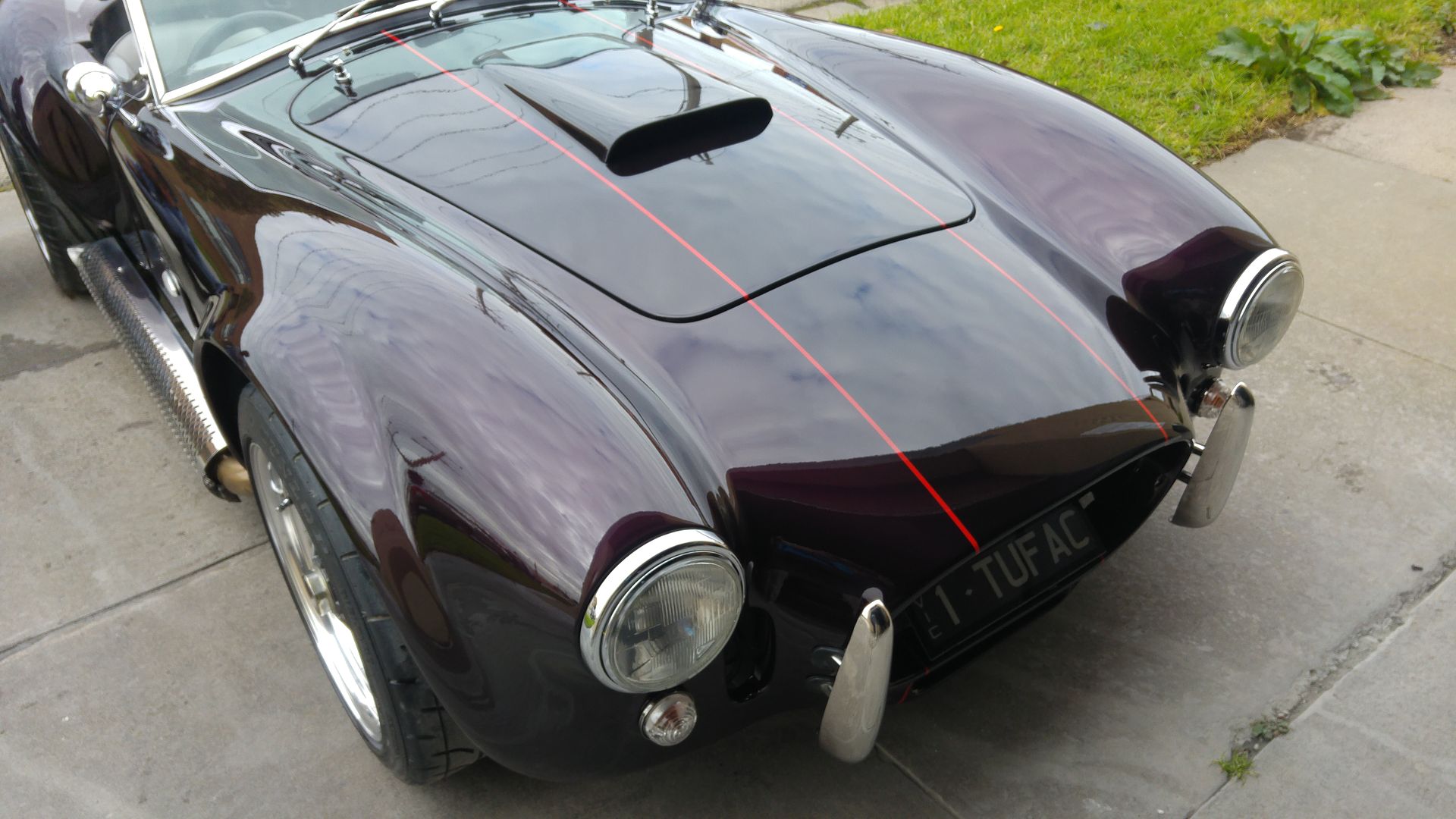Quote:
Originally Posted by leroy17

If it's not to much to ask, how about (from a professionals point of view) details of these steps, the process, the purpose and what differentuates from others (aside from prep time).
I ask this as I have never painted before and find it interesting the significant differences between paint finishes.
Prep for silver, grey, yellow, orange, blue, tan , White is looking good.
|
Great questions!
The cost of a paint job varies significantly depending on the following factors:
1. Quality of the composite body to be painted (judged on straightness, pinholes, voids, cracks/fractures, panel fit and shape).
2. Quantity of hours required to rectify above deficiencies
3. Number of times body and bolt ons are required to be highfill primed
4. Colour scheme selected by the client
5. Whether stripes and/or roundelles are required
6. Gloss level (Gloss, semi-gloss, satin, matt) selected
7. Whether car will be a 'street' finish or flow coated to a show car finish (involves sanding down every part after paint and reclearcoating with more clearcoat, then compound polishing to a mirror finish
With regards to process:
1. We go over the vehicle assessing and marking on the body and bolt ons (bonnet, boot, scoop and doors etc) where the deficiencies are
2. Entire vehicle is cleaned with a prepping solution
3. Panel gaps and fitment is confirmed. Adjustments to panel shape are made as required (sanding edges, building up areas etc)
4. Body is long block sanded and detail sanded to reveal all low spots and take down any high spots. We usually start with 40-80 grit as the coarser grit cuts straighter, working up to 120-180 grit dry paper. Body then cleaned with prepsol, a refined cleaning solvent
5. Polyester body filler applied to lows and pinholes. Voids are dug out filled. Cracks are repaired, reinforced and filled. Body then long blocked and detail sanded again to complete the correct profile. Finished between 120-240 grit.
6. Vehicle taken into the spray booth, masked up, blown off and prepsoled.
7. 3-4 coats of highfill 2 pack primer are applied with a 1.8mm primer gun, with 10-15 minutes elapsed between coats at 25 degrees celcius
8. Vehicle is low baked at 55 degrees celcius for 40 minutes. Then a black guide coat is lightly spray misted over the vehicle. The guide coat shows us where a low remains in a panel as the black spray will remain where the sandpaper does not touch it. Vehicle is then left to sit for 4-7 days for the primer to continue curing.
9. Vehicle is then long blocked and detail sanded again. Firstly, we start with 220-240 grit. If all repairs look good at this stage and there aren't any lows remaining, we continue sanding with a finer 400 grit, If there are still lows, we may need to apply some more fine filler and re-highfill spot prime the rectified area. Sometimes we can just re-highfill without needing more filler
10. Following satisfactory blocking with 220 grit and then 400 grit, we wet sand the vehicle with 800 grit wet paper. The sanding slurry is rinsed off.
11. Vehicle and bolt ons are setup in the spray booth. All apertures are masked off and the vehicle itself is masked to the floor to ensure overspray does not hit the undercarriage.
12. Vehicle and bolt ons are prepsoled again and then wiped down with a tack rag which will pick up any dust on the surface.
13. Vehicle then receives a single coat of colour-sympathetic epoxy primer surfacer. This ensures consistent basecoat application and correct colour representation.
14. After 10 minutes, the car is then ready for colour/topcoat
Bodywork hours naturally vary according to the amount of hours and materials required. My own Pace body needed approximately 20 hours of bodywork, whereas Mark's Harrison required over 60 hours.
The prep time for different colours is exactly the same.
Done right, this is what a nice paint job will look like. This is Mark's Harrison I painted:


Hope this helps.
Cheers,
Sime